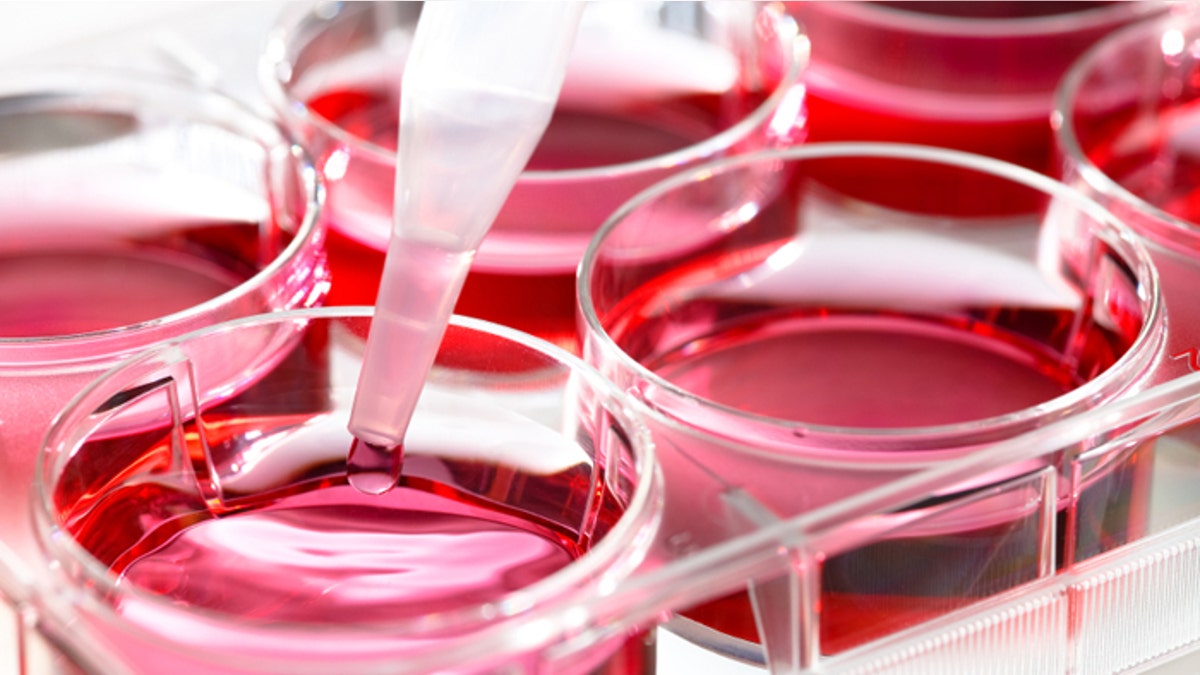
Growing stem cells in the laboratory (© 2009 Andrei Tchernov)
Heart stem cell therapy after a major heart attack holds the promise of helping to repair severely damaged cells by encouraging the growth of new ones. However, the process – which involves infusing healthy stem cells into the heart to replace the damaged tissue – has had limited success in clinical trials.
In order to get the most benefit from heart stem cell treatment, it is essential for doctors to properly place the cells in the heart. But, once the stem cells are injected, it’s difficult to determine exactly where they wind up, and many scientists believe faulty placement is ultimately the culprit of the therapy’s disappointing results.
Now, that problem could be potentially solved with a new visualization technique developed by Dr. Sam Gambhir and fellow researchers at Stanford University School of Medicine in California. Their study, published in Science Translational Medicine, details the invention of silica nanoparticles, which can be injected inside stem cells, acting as tiny tracking devices that allow doctors to see the stem cells’ path inside the body.
According to the study’s researchers, the most encouraging results from heart stem cell therapy have been seen after bypass surgery, which is done right after a patient has suffered a heart attack. If performed correctly, stem cell injections can encourage new cell proliferation and help increase blood flow up to 10 percent.
To get the most benefit, doctors have to find the perfect place in which the cells will do the most work.
“The best place is the region (in the heart) between the damaged tissue and the healthy tissue,” Jesse Jokerst, a postdoctoral fellow in the Stanford Molecular Imaging Scholars Program and one of the study’s authors, told FoxNews.com. “That’s where the most therapeutic benefit can occur. When placed there, the stem cells can take advantage of the blood flow in the healthy region, but can effect a change in the diseased region.”
In order to determine where to place the cells, physicians currently take images of the heart through magnetic resonance imaging (MRI) – one image before the injection to estimate placement, and a second image after the injection to see how the cells have developed. But the time period between the capture of those pictures leaves a lot to be desired, as the stem cells do not have a unique “signature” that allows doctors to differentiate between them and the normal heart cells.
Feeling somewhat blind, the doctors have many questions once the stem cells are injected. Did they reach their intended target? Did they remain at the heart wall? How many cells actually stayed and how many diffused or died? Inevitably, the doctors have to wait weeks following the stem cell injection to get their questions “answered,” by observing if heart function improved.
Making a stem cell 'movie'
Frustrated by those time constraints, the researchers realized all their questions could be answered a lot faster and much more accurately through ultrasound imaging.
“MRI is like taking a photograph,” Jokerst explained. “But we want to see the cells like in a movie, and that’s what ultrasound allowed us to do.”
The researchers decided to work with a material called silica – a chemical compound somewhat related to glass, which is found in sand and quartz. After creating silica particles with diameters of just 300 nanometers – one-three-thousandth the width of a human hair – the team injected the tiny silica “trackers” into the stem cells, which easily ingested and stored them without any complications. The stem cells – which were derived from the hearts of mice, pigs and humans – were then injected into the hearts of healthy mice, where they were observed by the researchers.
As soon as the stem cells left the needle, sound waves from an ultrasound passed through the body. The silica, which is ideal for backscattering ultrasound waves, caused the waves to bounce back, highlighting where the stem cells were aggregating in the body.
According to Jokerst, the cells appeared much more clearly than they had imagined.
“Luckily, when we put the nanoparticles inside the cells, they aggregated together into larger structures inside of the cellular compartments,” Jokerst said. “We were prepared to have OK signal, but we were surprised at how dramatic the signal increase was as a result of that aggregation.”
Through this new technique, the team was able to detect as little as 70,000 stem cells through ultrasound and as little as 250,000 through MRI. The Stanford team has filed for provisional patents for their invention, but they noted this type of imaging wouldn’t be available in humans for at least three to five years. One of the biggest hurdles the procedure still needs to overcome is biodegradation – making it so the particles degrade to even smaller particles once the imaging is done so that they can be excreted in the urine.
Overall, Jokerst envisions this treatment being used on patients with shortness of breath, congestive heart failure, and most notably, those who have suffered severe heart attacks. Ideally, patients would benefit from the current imaging technique, and the new more film-like procedure.
“We’ve changed the composition; so not only would we have MRI signal, but also ultrasound signal,” he added.
